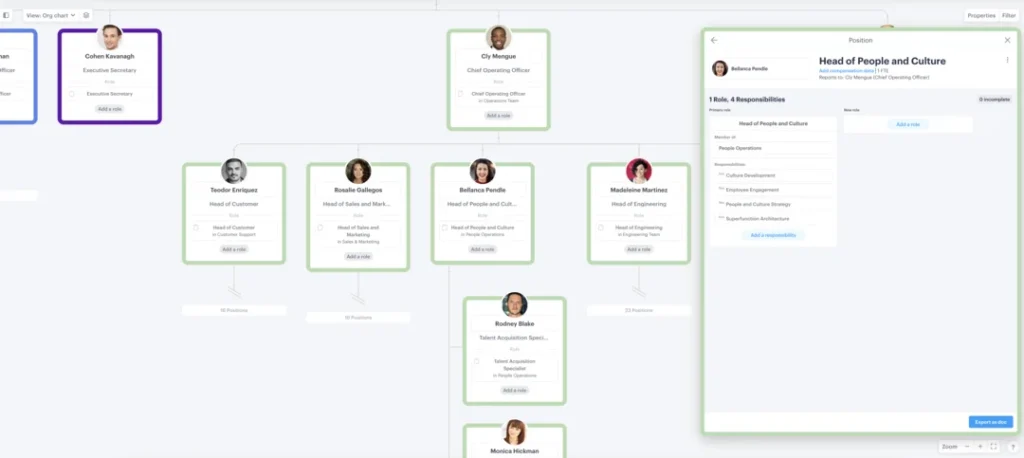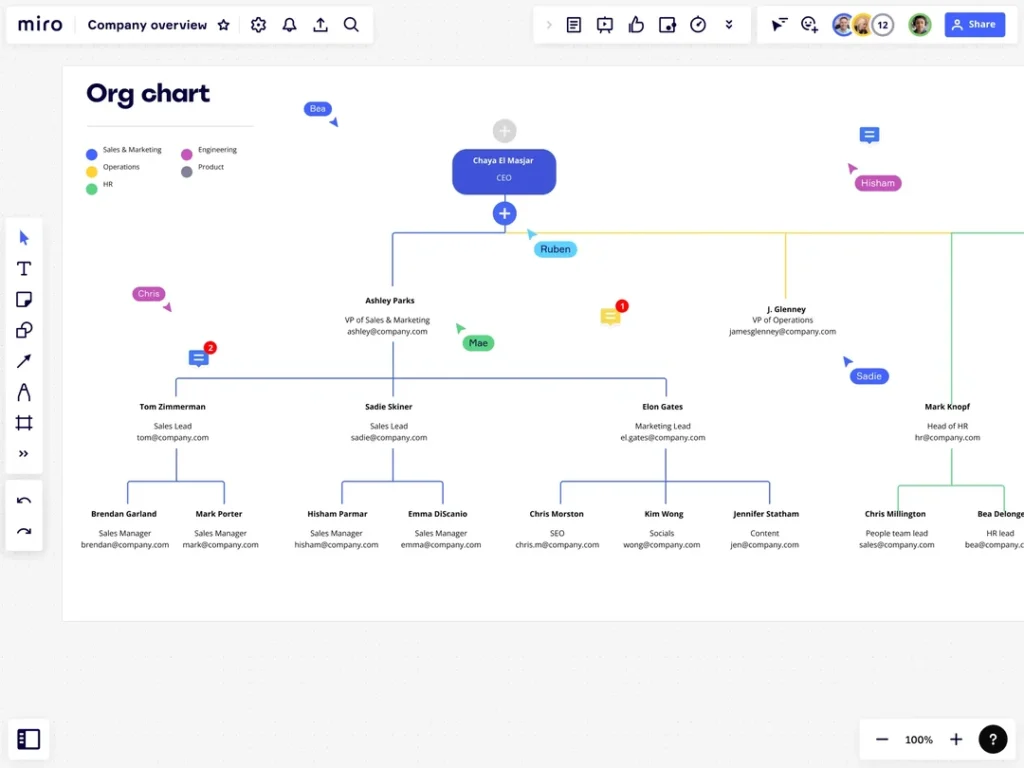Organisational Charting as Strategic Tools
An organisational chart visually depicts the structure and relationships within a company. Organisational charts are more than just a static diagram; they can be powerful strategic tools for aligning a digital marketing agency's vision with its organisational structure. With thoughtful planning, organisational charting can help agencies adapt to market changes, enable effective collaboration, and support talent growth.
Table of Contents
Clarifying Roles and Responsibilities
A clear organisational structure clarifies roles and responsibilities across teams and among individual employees. Defining responsibilities is especially critical for digital marketing agencies serving multiple clients across various services. By mapping reporting structures, groupings, and chains of command, agencies gain alignment around who owns which tasks and decisions. This clarity empowers employees and teams to take the initiative within their purview.

As strategies and service offerings adapt to ever-changing digital marketing landscapes, organisational charts should be revisited to ensure clarity keeps pace. Organisational charting tools make this a simple, collaborative process.
Facilitating Cross-Departmental Collaboration
Today's digital marketing environment demands increased collaboration across disciplines. Organisational charts can facilitate this by revealing potential gaps in communication flows between departments. For example, positioning the SEO and content teams in parallel on a chart rather than in a linear hierarchy emphasises their interdependent relationship.
Thoughtful organisational charting also considers interaction frequency between roles. Are social media managers conferring with link builders as often as they should? Do certain managers have too many direct reports to mentor effectively? Asking these questions allows executives to identify collaboration barriers and adjust structures accordingly.
Enabling Talent Mobility and Growth
A clear organisational structure empowers employees at all levels to visualise a path for mobility and growth within the company. When junior web developers understand what senior and lead web developer roles entail and where those teams sit in the org chart, they can actively work towards those goals.
Of course, this requires keeping organisational charts up-to-date as new roles emerge. HR can partner with department leads to develop positions aligning with strategic priorities. Signalling opportunities this way improves talent retention and motivation.
Reorganising to Support New Directions
Markets pivot quickly in the digital space, and marketing agencies must keep pace. Adjusting organisational structures can support adapting to new strategies and directions.
For example, if launching a machine learning capability becomes critical, agencies might acquire an AI speciality firm or reskill specific teams. Either way, organisational charting helps determine where to embed this capability to enable idea-sharing and alignment with other technical groups.

Alternatively, expanding offerings into new industries or geographic markets might warrant splitting off specialised sub-agencies or wholly new business units. Reorganising reporting flows from the executive team down can facilitate these new focuses.
The beauty of digital organisational charting is that it simplifies reorganisation and iteration. Simple drag-and-drop tools like this easy organisational charting tool keep organisational structures agile. Leaders can quickly visualise and weigh various scenarios to find the correct configuration, all while retaining employees in the loop.
The Value of a Living Document
Rather than set it and forget it, organisational charts should be living documents that evolve alongside agency strategy. Whether launching new offerings, entering new digital spaces, or driving increased collaboration, organisational charting can serve digital marketing leaders in aligning structure, talent, and priorities. With user-friendly administrative chart tools, adapting organisational structures to market dynamics is simple and visual. For digital marketing agencies, it is well worth leveraging them as full-fledged strategic tools.
Common FAQs
What are organisational charts, and why are they important?
Organisational charts visually display the structure and hierarchy of an organisation. They allow employees and stakeholders to easily understand reporting relationships and how different roles fit into the structure. Organisational charts are strategic tools that help planning, decision-making, and aligning teams.
How can organisational charts improve business strategy?
Organisational charts provide insights that can strengthen strategic planning and goal alignment across departments. By mapping out different functions and levels, businesses can identify communication gaps, redundancies, and opportunities for improved collaboration. Leaders can use charts to clarify priorities, assign responsibilities, and ensure all activities ladder up to core objectives.
What are the benefits of departmental organisational charting?
Breaking down enterprise-wide org charts into charts by department provides a more detailed look at each unit. This allows for analysing resource allocation, spans of control, and potential structural issues within each department. It enables optimisation and change management at the departmental level to best support broader strategic goals.
How often should you update organisational charts?
Organisational charts should be updated at least once a year as a best practice. Major restructuring, growth, leadership changes, and M&A activity warrant immediate chart updates. Keeping the charts current helps managers make informed decisions and helps employees understand reporting procedures during times of transition.
What software tools can you use to create org charts?
Many programs help build clear and helpful org charts through visualisation, customisation and data integration. Leading options include dedicated org chart tools like Lucidchart and Pingboard, systems like Smartsheet, and Microsoft programs like Excel and Visio for basic charts. HRIS systems may also have org chart capabilities.
